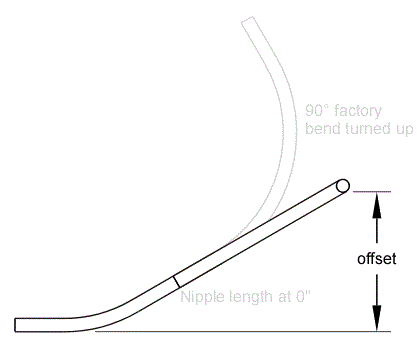grasfulls
Senior Member
- Location
- San Bernardino. CA
Layout of attached elbows
Layout of attached elbows
I got lost, sorry. Your first post said "a factory 30 deg kick attached a factory 90," but now 2 ea 30 deg? Do your elbows match the attached specs (page2)? A factory 2.5" EMT 90 is 16", no? How do you get 14.5" with a 30degree elbow attached? Can you draw it for us?
thanks!
Layout of attached elbows
I see, so if I put two factory 30 deg kicks together, and measure the offset to be 4 inches, then I need to deduct the centers of bend from each kick to the end of fitting. So in the above example, with an offset of 4 inches, the center to center on the kicks should be 8 inches, cosecant of 30 being two, which is my hypotenuse. So if I want a 12 inch offset, I would have to cut a 16 inch nipple. But again, my problem was with the kicked 90. I,m just not sure how to do the math correctly for making a kicked 90 with a factory 30,a nd factory 90, other than laying it out on the floor or wall as I am being told. Thank for everyones help here.
I got lost, sorry. Your first post said "a factory 30 deg kick attached a factory 90," but now 2 ea 30 deg? Do your elbows match the attached specs (page2)? A factory 2.5" EMT 90 is 16", no? How do you get 14.5" with a 30degree elbow attached? Can you draw it for us?
thanks!


